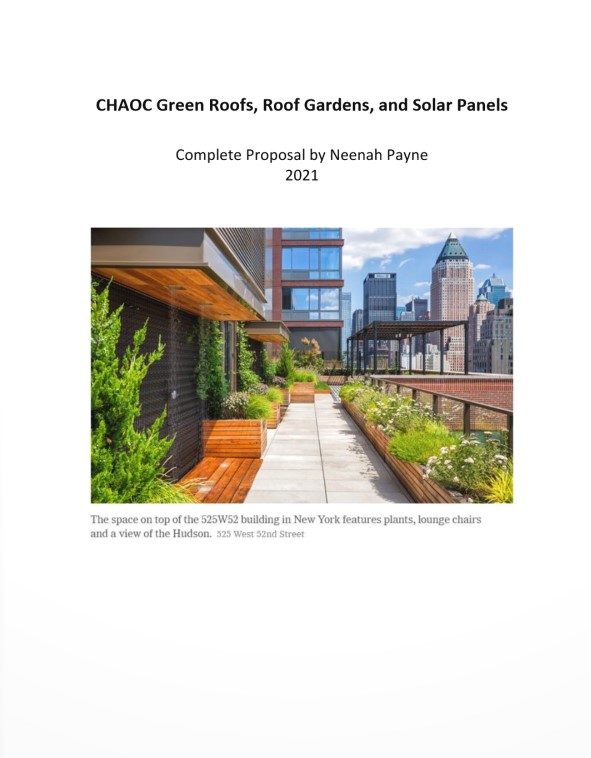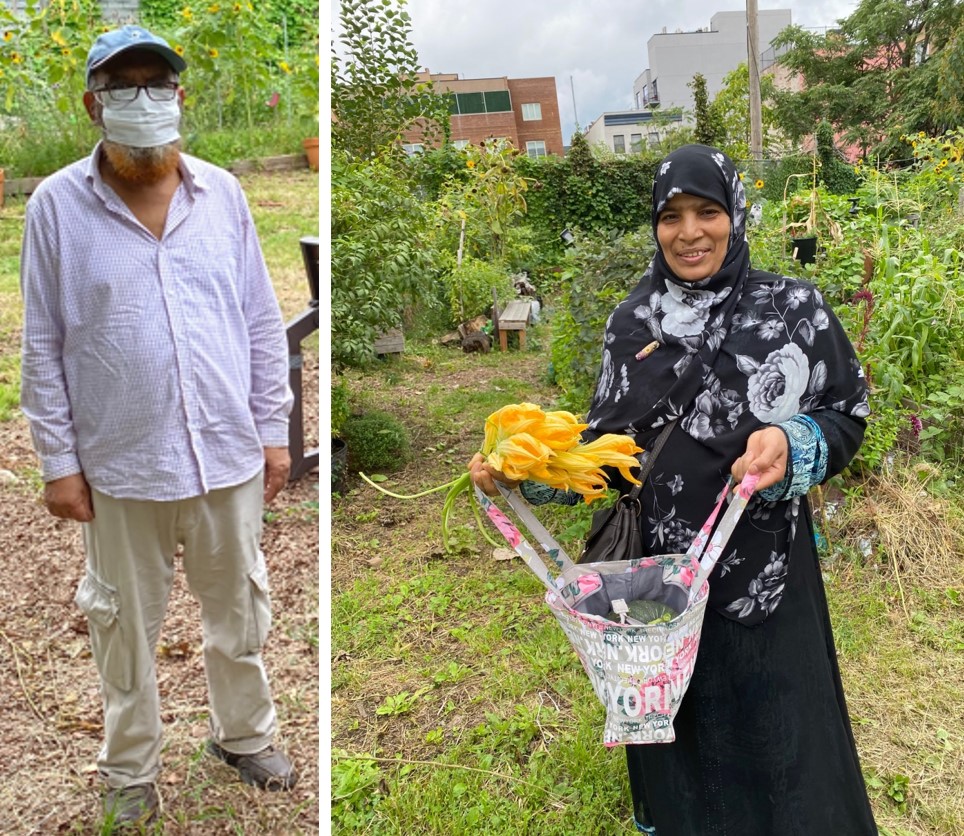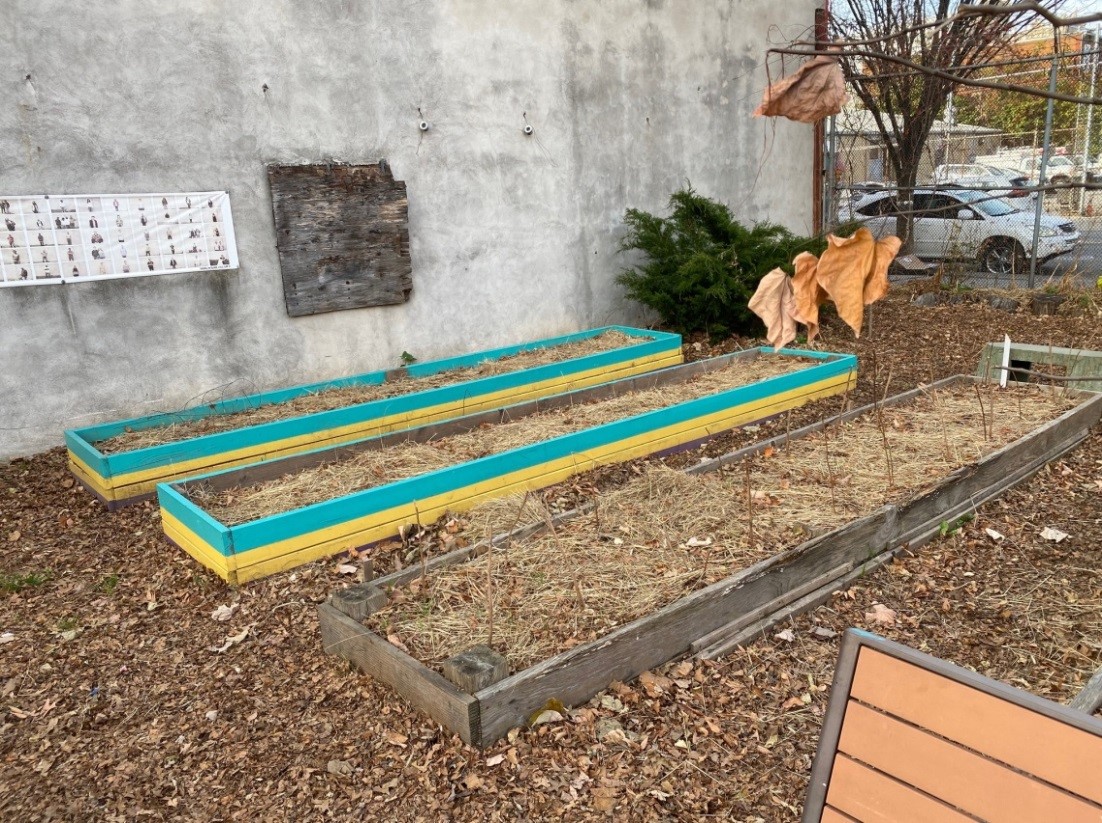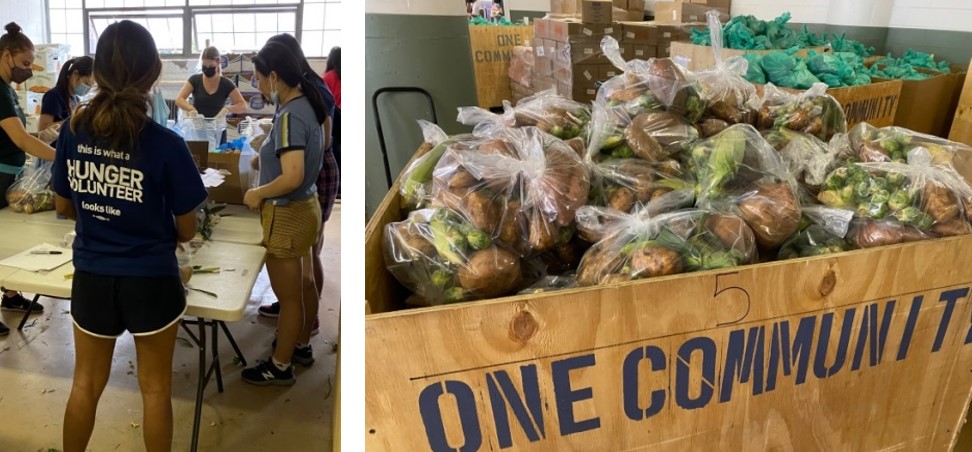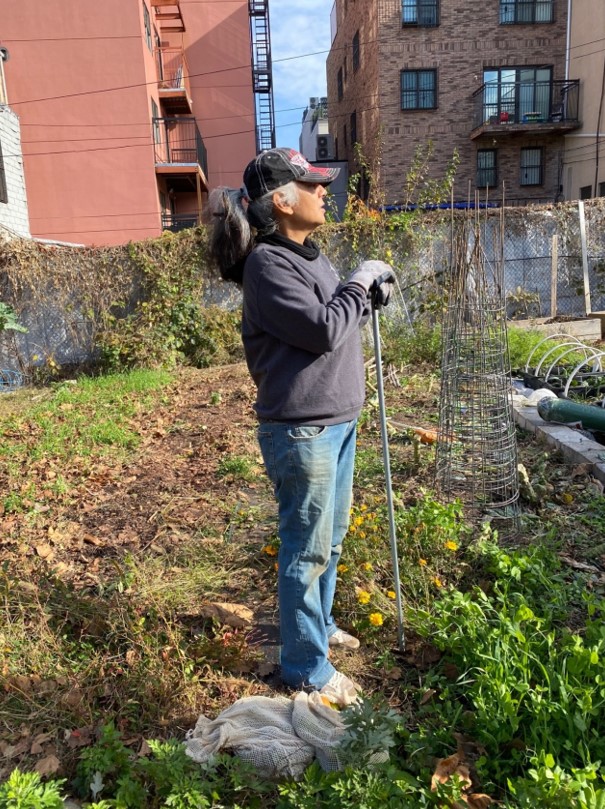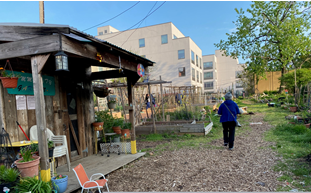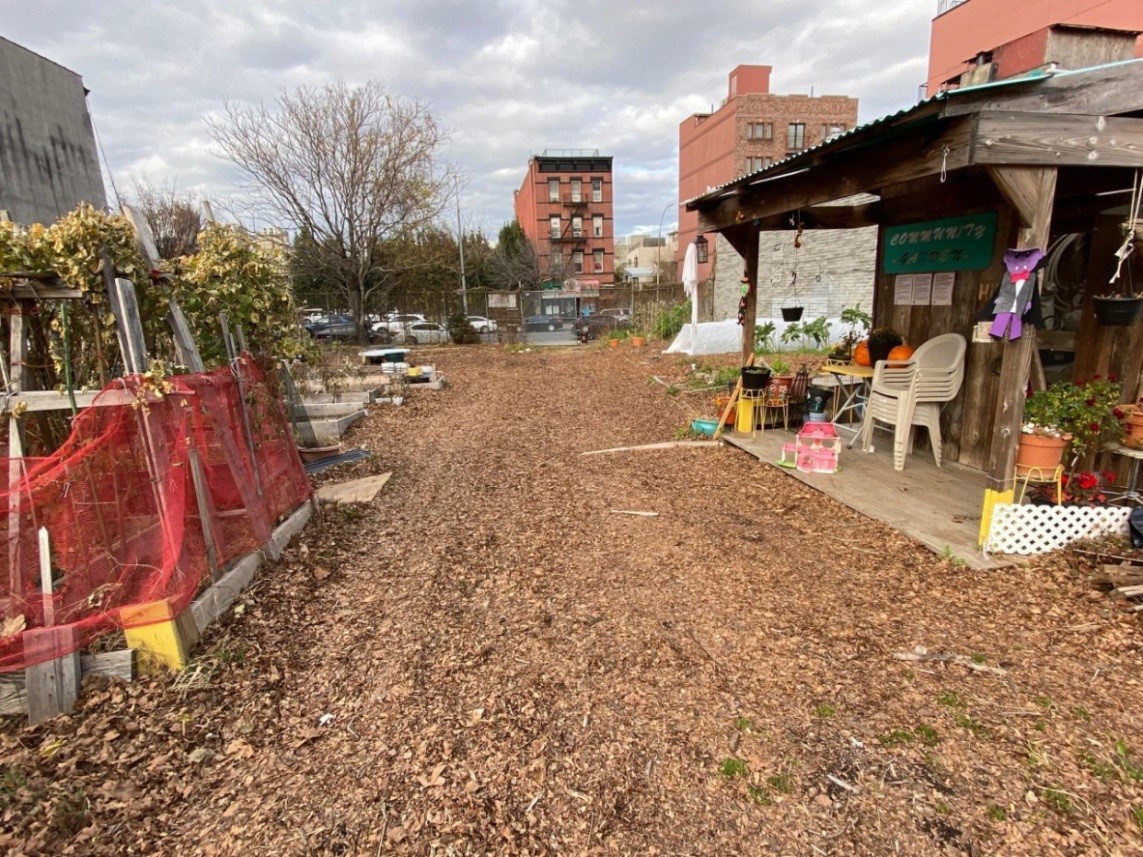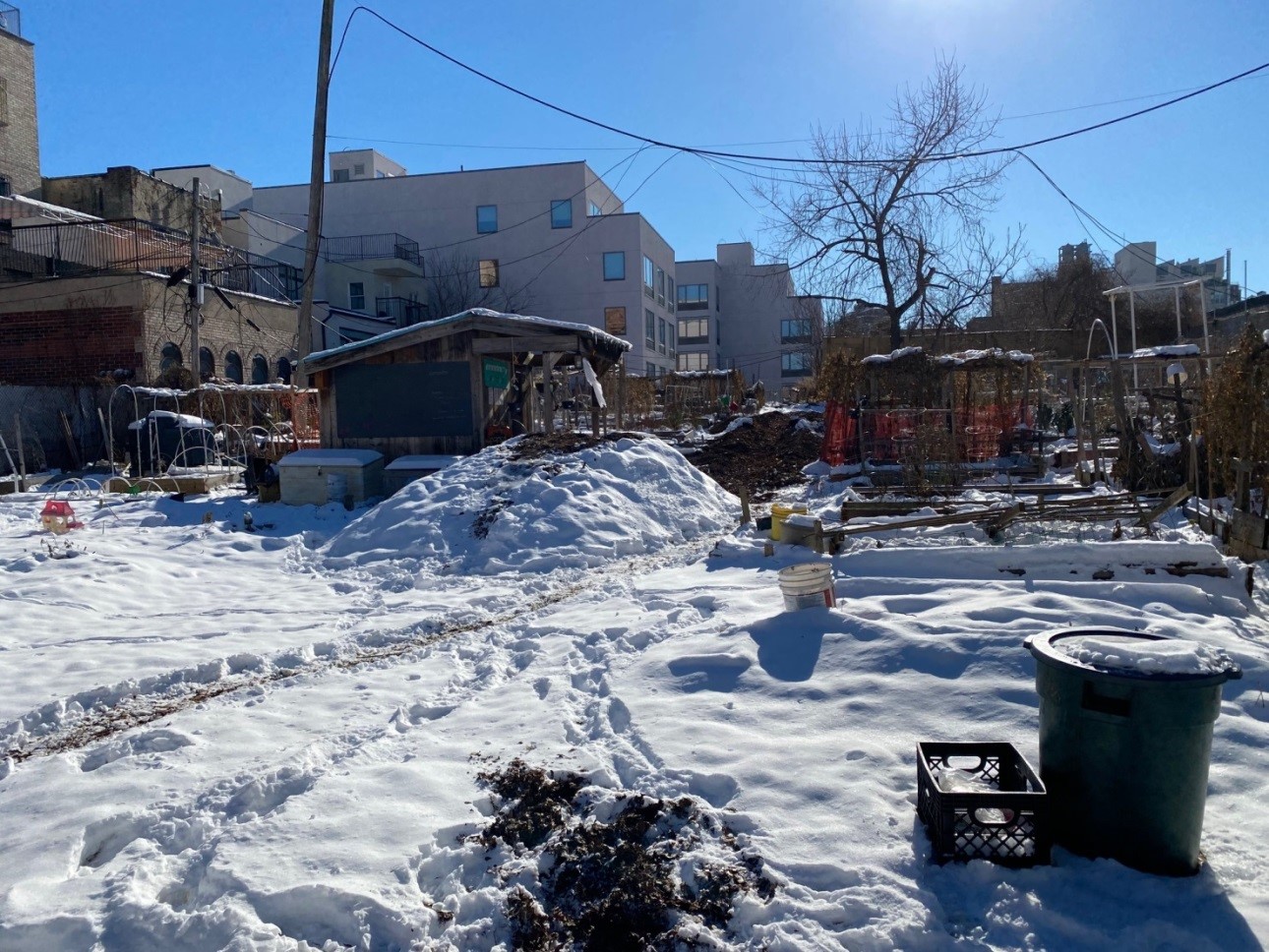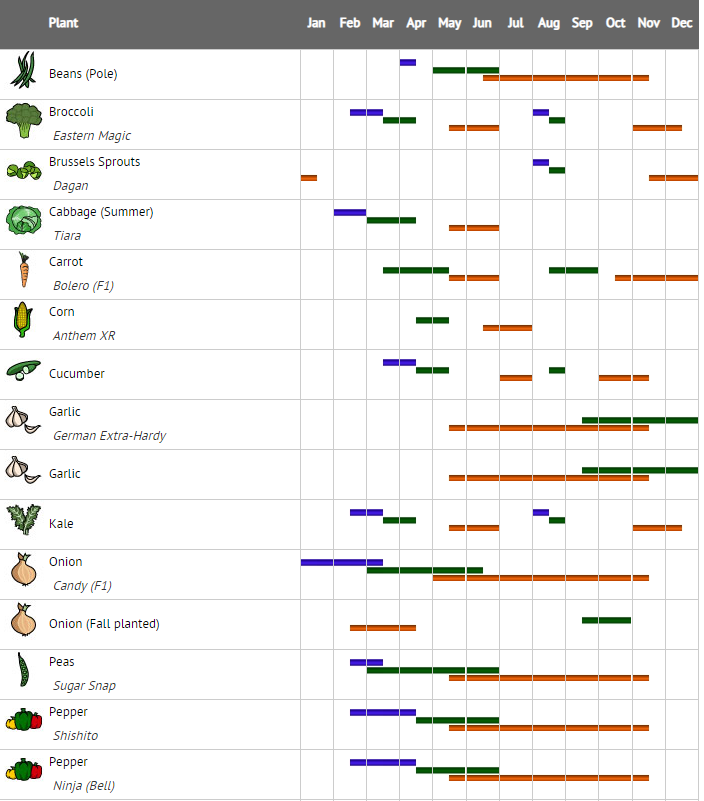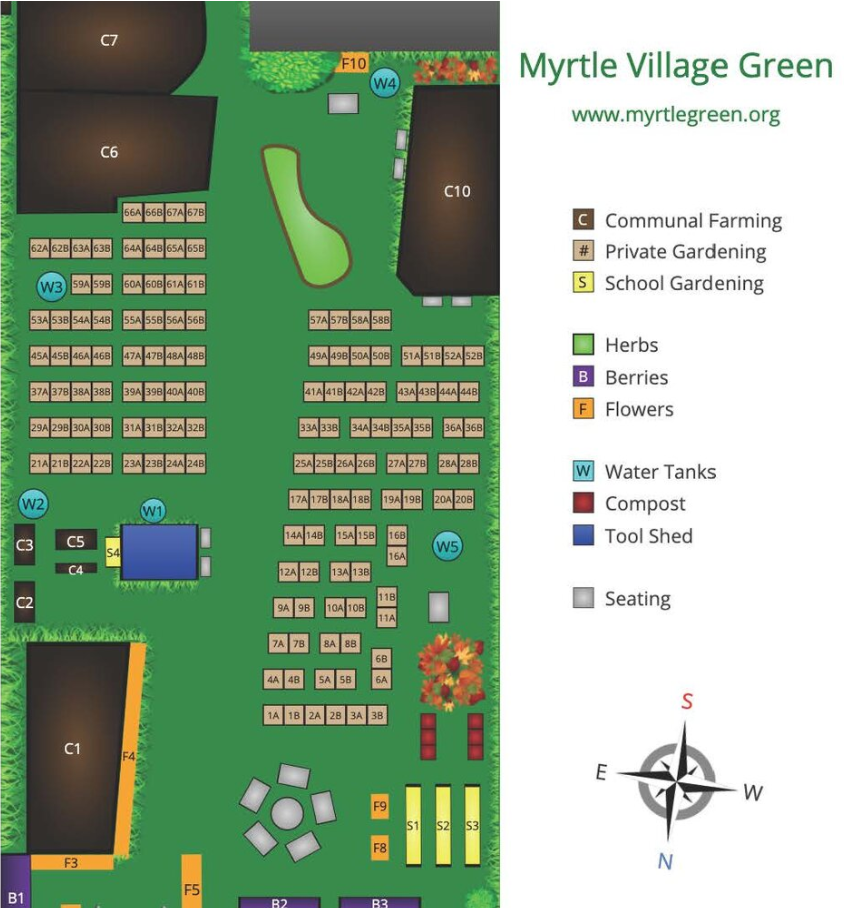 By Neenah Payne
By Neenah Payne
My First Indoor Gardening Steps shows that I joined the Myrtle Village Green Community Garden on May 8, 2021. I became a “Core Member” on November 6 and have been invited to help with the Pantry Project and the Flower Ag Bed this year. Both will provide me with a good introduction to gardening that will be valuable if I get my own plot next year. This is the first year the MVG Community Garden was designated by New York City as a drop-off site for Christmas trees. The garden received 112 trees and lots of wreaths on January 8-9. That was the second biggest haul for a community garden — pretty impressive for MVG’s first year!
Composting: Creating Soil For The Garden
Shawn Onsgard and his wife Megan who are originally from Wisconsin joined the garden in 2012. He asked members of the garden to assist him on January 8 in receiving Christmas trees. When I arrived, a new member was churning the compost — as shown below. Although the outdoor temperature was in the 20s, when Shawn took the temperature of the compost, the steaming hot bin was cooking at 150 degrees — a detail he was very proud of! Below, Shawn shows some good soil from the compost. Three more composting bins are shown against the wall — for a total of six bins.
Shawn explained that food scraps provide nitrogen for the compost and leaves provide carbon. See The Carbon-Nitrogen Radio (C:N).The leaf pile in early December is shown below and is behind Shawn in the photo above.
In discussing the garden’s ability to meet the demand for finished compost, Shawn pointed out,
“We are limited by the amount of volunteer labor we have. There is a profound supply of nitrogen-rich feed stocks in the community that we could tap into — for example, partnering with my heroes at BK Rot. However, we’re at an equilibrium now with the amount of labor our volunteers can offer and the amount of work that needs to be done. Every year, we recruit and train more volunteers which builds our capacity. I will be advertising compost trainings in our Google Group and Facebook page this spring.”
Shawn explained how the six compost bins are used,
“We feed one bin until it’s full, and then use corkscrew tools to mix and aerate the bin until it’s ready to go out and fertilize the garden. Typically, the timing works out that we empty a finished bin the same day that we need that space to start a new feeding bin. Usually, every bin is full of compost at some intermediate stage of decomposition, and rarely are any of them empty.
Over the winter, in addition to our six screened compost bins, we also compost with wind rows—the large heaps of compost in the community ag plot. Wind rows are a great way to compost large bulk amounts of organic material, and the entire heap can be spread out into the garden plot right where it is when the weather warms up. That saves us a lot of wheel barrow labor.
However, since wind rows don’t have the metal screens that our structured bins do to prevent rodents, we let the food scraps partially compost in the bins until they aren’t recognizable as food scraps any more. Then, we use this hot, partially-composted matter to build our windrow. We mix in as much bulk chopped weeds and garden waste (squash vines, sun flower stalks, etc.,) as we can. That is why multiple compost bins were empty during your visit. We had recently emptied them to build wind rows.”
Shawn explained that new members of the garden are usually given a very small plot. Some people initially complain, but when they realize later how much work is involved, they understand the wisdom of starting small!
Green Roofs
Shawn pointed out that the nearby Chocolate Factory (689 Myrtle Avenue) has a roof garden. The site says:
“The condominium building boast a large GYM a Children play area on the ROOFTOP GARDEN with panoramic views of the city and glass enclosed ROOF DECK GYM.”
We discussed Brooklyn Grange, the world’s largest rooftop garden in the world, which is a short walk from the garden. When I took an official tour of Brooklyn Grange in 2016, I saw the garden, the greenhouses, the chicken coop, and the beehive — and bought some honey. I visited Brooklyn Grange last summer when I went to the Navy Yard as a member of the garden to help a Food Pantry. See Brooklyn Grange: World’s Largest Rooftop Farm
I explained that I took a green roofs course at Brooklyn Grange in 2016 and tried to get my co-op to contact Brooklyn Grange to see if our 12 buildings can have green roofs. The Board turned down the idea because the roofs were new. However, when I visited the Brooklyn Grange office last year, I was told that green roofs should be installed when roofs are new! I tried to get the current co-op board interested in having a Zoom call with Brooklyn Grange about green roofs. When they declined, I created a 62-page Flip Book proposal for Green Roofs, Roof Gardens, and Solar Panels shown below and posted it on my Urban Gardens Revolution site. I am running for the co-op board this year as a single-issue candidate — to see if it’s possible for our co-op to have green roofs, roof gardens, and/or solar panels. Shawn used the QR code for the Flip Book to access it.
Foraging in Prospect Park
On May 8, when I was given a key to the garden, I met Elba Cornier, one of the founders of the garden and we became fast friends. We’ve spent lots of time chatting on the phone and had an extended lunch at a great Italian restaurant in the neighborhood. Elba invited me to a number of NYC rallies. I included her photos in several of my articles which were published about the rallies.
Elba also suggested that I go foraging with “Wildman” Steve Brill which I did in Prospect Park on December 4. That was Steve’s last tour for the season in the park. He had one final tour in Central Park the next day. Steve was accompanied by his daughter, Violet, who sometimes leads the tours on her own. Violet is an avid bird watcher and she emailed me the photos of birds she took on the tour which I included in my article Foraging With “Wildman” Steve Brill and Violet.
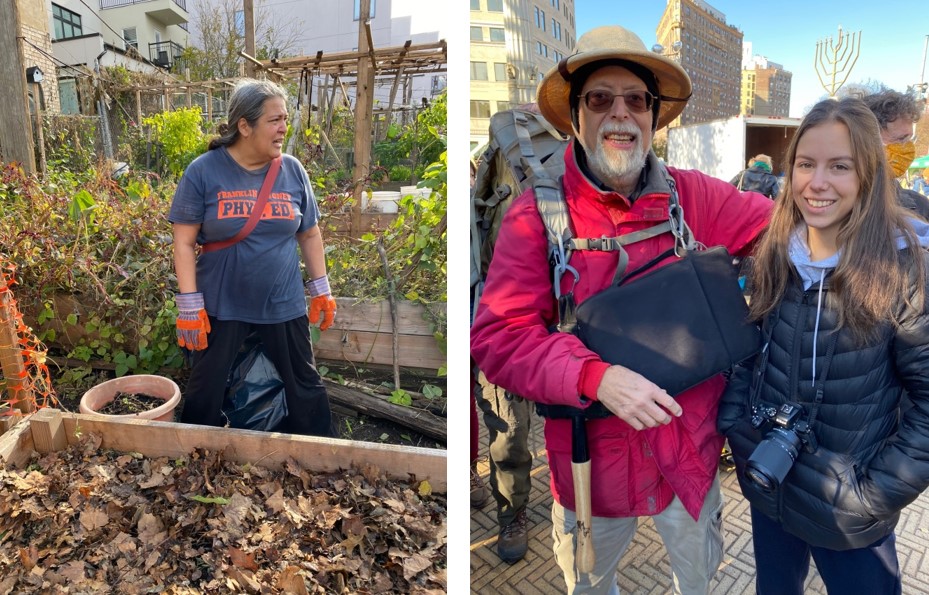 Steve’s books, DVDs, his flash cards are available on his site.
Steve’s books, DVDs, his flash cards are available on his site.
I hope to go foraging this year again in Prospect Park and also on the Apalachian Trail.
Pantry Project in Fall and Winter
Elba was an elementary school teacher until last year when she quit rather than being forced to take the COVID shot. She founded the Pantry Project in the garden for the kids in the school. When COVID hit, the kids were no longer allowed to go to the garden and Elba turned the plot over to the Bengali community in the garden. When they were short-staffed last year, Elba recommended that they invite me to help them.
Nokib Ahmed and his sister Roshan Ara manage the Pantry Project which is used to provide food for the community. They showed me around the plot in September and gave me some produce. They invited me to start working with them in April.
Pantry Project in November
Pantry Project in early December
Pantry Project in early January
Food Pantry and Flower Ag Bed
My neighborhood in Brooklyn, NY has an extensive program to help reduce food insecurity. Alejandra Remijio, Event Coordinator at the Myrtle Village Green community garden, was contacted by Chad Purky, BID (Business Improvement District) Executive Director of Myrtle Avenue Revitalization Project (MARP) to request volunteers to help package foods at the food pantry in the Brooklyn Navy Yard.
The MARP site says:
“Through programs like the Fort Greene & Farragut Fresh Pantry, our Healthy Communities Initiatives connect local residents with healthy, affordable food and active living programs in Fort Greene and Clinton Hill. Our Healthy Communities Initiative engages community members in improving access to healthy, affordable food in Fort Greene and Clinton Hill; supporting residents as they grow their own food; increasing community nutrition education & physical fitness opportunities; cultivating leaders of all ages; and documenting the food & health needs and desires of our community, especially for those with low incomes and seniors.
The Fort Greene & Clinton Hill Fresh Pantries, operated in collaboration with One Community and the Clinton Hill Fort Greene Mutual Aid (CHFGMA), provides over 10,000 pounds of FREE fresh produce and perishable items each month to residents of Atlantic Terminal, Farragut, Ingersoll, and Whitman Houses every Saturday. We are thankful for receiving food to distribute from City Harvest. We are proud to partner with the Atlantic Terminal, Farragut, Whitman and Ingersoll Residents Associations on this initiative.”
Alejandra recruited four of us to assist at the pantry last summer. The operation is run by Ryan Greenlaw, the MARP Director of the Social Impact Partnerships Program. He helps manage the program’s food access, youth employment, and senior living programing for residents of two neighborhoods. Ryan previously served at Lyft as an equity and community engagement specialist connecting NYCHA residents and SNAP recipients to bikeshare.
When I went to the garden on the November 13 Work Day to help spread leaves, Alejandra invited me to join the Flower Ag Bed in the spring. This will be another great opportunity for me to learn more about gardening so I can manage my own plot next year. She invited me to join GroupMe to facilitate communication just within our group. Alejandra brought lots of flower seeds back from her trip home to California and plans to plan them in the Flower Ag Bed this year.
Tool Shed in Spring, Fall, and Winter
Two truckloads of leaves were spread throughout the garden in early November. Another three truckloads were delivered later! Walking on the soil feels like walking on a sponge mattress! See Preparing A Community Garden For Winter.
Matthew Rader is developing the plan for the 2022 garden as shown below and left room my plants. I mentioned that I would like to grow kale, blue potatoes, Yukon Gold Potatoes, butternut squash, and/or parsnips. Being a member of the garden is like attending an informal school where it’s easy to pick up a lot of knowledge about what goes into making a garden work. I was surprised in November to see all the leaves the garden received from the city and spread out across the plots. It’s an opportunity to learn about composting — how soil is created. It’s also a chance to learn which crops to plant when and how.
Grow Plans For 2022 Garden
The chart below shows which plants will be planted when.
https://www.growveg.com/garden-plans/1371790/
Map of the MVG Garden
The map of the garden shows how the plots are laid out. The Tool Shed is the blue rectangle in the middle. The yellow S1-S3 (now S2-S3) rectangles are the Pantry Project. The two red rectangles above them are the six composting binds with the leaf pile above them. The grey circle shows the meeting table and benches for garden meetings. Plot C7 is for the Bengali community. Plots C6 and C10 are for the Mexican community. The small tan squares are individual plots.
Neenah Payne writes for Activist Post and Natural Blaze
Become a Patron!
Or support us at SubscribeStar
Donate cryptocurrency HERE
Subscribe to Activist Post for truth, peace, and freedom news. Follow us on Telegram, HIVE, Flote, Minds, MeWe, Twitter, Gab, What Really Happened and GETTR.
Provide, Protect and Profit from what’s coming! Get a free issue of Counter Markets today.




